How Artists Unknowingly Painted Breast Cancer 🦠
Famous artists captured breast cancer perfectly without knowing what they were seeing. Modern medicine finally understands.
Some painters have meticulously captured reality, including illnesses that, centuries later, we can now identify.
This October, dedicated to raising awareness about breast cancer, let me guide you through a fascinating journey where art meets medicine, revealing how history’s greatest masters unknowingly documented one of humanity’s oldest diseases.
Recent research by medical experts has uncovered something extraordinary: Renaissance and Baroque masterpieces serve as inadvertent medical records, documenting breast cancer symptoms with startling accuracy.
La Fornarina by Raphaël : The First Clues
Let’s start with Raphael’s famous “La Fornarina.” You can see how the left breast looks slightly smaller than the right, with a faint blue tint and a bit of swelling in the left arm. These could be possible signs of early breast cancer, though we can’t say for sure.
The model was Margherita Luti, Raphael’s probable lover, and the pinching under her left breast and the slightly bluish pigmentation, together with the swelling visible on her left arm, are thought to be signs of advanced breast cancer.
But Raphael wasn’t alone in this inadvertent medical documentation.
Rembrandt’s Tragic Story
Another compelling example appears in Rembrandt’s “Bathsheba at Her Bath.” Here, we can observe signs on her left breast: a dark spot and some distortion near the arm that might suggest breast cancer, possibly with lymph node involvement.
What makes this case even more fascinating? The model was actually Rembrandt’s companion, who died a few years later. Although she passed away from the plague, there are debates about whether she also suffered from breast cancer or mastitis, as both share similar symptoms.
Rubens: The Master Medical Chronicler
Rubens was “one of main baroque painters who practices realism, which means that he painted whatever his eyes capture.” This commitment to truth has provided researchers with an unprecedented medical archive. Remarkably, experts have identified six different breast diseases across his works.
“Samson and Delilah”: Classic Warning Signs
To show a different set of symptoms, let’s examine Rubens’ “Samson and Delilah.” Here, instead of swollen lymph nodes or enlargement, we notice a dimple on her right breast and an inverted nipple, both less common signs of breast cancer.
“The Three Graces”: Advanced Disease
In “The Three Graces” we can see that the model on the right has “an open ulcer with reddening of the skin, nipple retraction, reduction of breast volume as well as axillary lymph nodes. This is a visual aspect of a locally advanced breast cancer.”
More Hidden Evidence
In this 1617 painting, Rubens depicted “Judith’s left breast with a lump involving the upper lateral quadrants, extending toward the subclavicular and axillary areas.” Interestingly, medical experts believe this mass was likely benign, showing that not every abnormality in these paintings represents cancer.
The Earliest Evidence
“The Night” by Michele Tosini and “Allegory of Strength” by Maso di San Friano are “some of the earliest paintings believed to depict signs of breast cancer.” The first shows gradual breast retraction, while the second draws attention to a noticeable color change, a symptom that could indicate a serious condition.
Art Documents Medical Progress
By the 19th century, artists began deliberately capturing medical advancement. Thomas Eakins’ “The Agnew Clinic” (1889) shows Dr. Agnew performing a mastectomy in a revolutionized operating environment: electric lighting, sterile white gowns, professional nursing staff, and antiseptic techniques.
Comparing this to earlier surgical practices reveals medicine’s dramatic evolution. “Dr. Agnew himself insisted that his hands and gown be free of blood,” symbolizing surgery’s transformation from barbaric procedure to precise science.
The Medical Context: A Revolution in Treatment
While these artists unknowingly documented breast cancer, physicians were simultaneously revolutionizing treatment. Ancient Egyptian papyri from 3,000 B.C. deemed advanced cases incurable. Galen attributed cancer to “black bile” accumulation, and for centuries, brutal surgeries without anesthesia were the only option.
The Renaissance brought breakthrough moments: French surgeon Barthélémy Cabrol performed some of the first mastectomies in the 1590s. The 19th century introduced anesthesia (1846) and antiseptic technique (1867), making surgery survivable.
William Halsted’s radical mastectomy, developed in 1894, dominated treatment for nearly a century until the 1960s, when researchers proved that “women with early-stage breast cancer who were treated with a lumpectomy and radiation have similar survival rates to women treated with only a mastectomy.”
Why Artists Painted Disease
The Renaissance emphasis on anatomical realism, combined with limited access to “respectable” female models, meant artists often painted women from lower social classes who had limited medical care. “Artists would either pay women of a certain sort to model for them,” inadvertently creating medical documentation.
Additionally, “interest in medicine and human anatomy began to flourish during the time and artists strove to create more and more realistic images of the human body.”
Reading the Signs Today
These masterpieces reveal the symptoms we should watch for: dimples, deformities, swollen lymph nodes in the arms, inverted nipples, changes in skin color, lumps in the breast, redness, or blood discharge.
While these symptoms don’t always mean breast cancer, they can point to other health issues. So, when in doubt, get CHECKED!
A Modern Perspective
Today, medical schools use these paintings to train students in observation skills. Even though it’s rare around 1%, men can also develop breast cancer. Breast cancer remains the deadliest cancer for women, but it’s also one of the most treatable when caught early.
When Art Meets Medicine
From Raphael’s intimate portraits to Rubens’ unflinching realism, from brutal ancient surgeries to today’s targeted therapies, these paintings connect us to centuries of human experience with breast cancer. They prove this disease isn’t modern but has shaped lives throughout history.
The next time you visit a museum, remember: you’re witnessing medicine, history, and human resilience captured in oil and canvas, telling stories that continue to save lives today.
This October, as we observe Breast Cancer Awareness Month, these artistic revelations remind us that awareness, early detection, and action remain our most powerful weapons against this ancient foe.
Thanks for reading! Just a quick note: “Cool Stories About Art” is entirely supported by its readers. If you’re enjoying our fun approach to art history, consider becoming a member for a few dollars a month.
Your support makes a huge difference, and you’ll unlock our weekly artist discoveries and the full library of “Netflix-style” stories. Thank you! ❤️
🎁 Looking for a unique gift? Give a year of fun art history for a friend’s birthday or Christmas.
10 Artists Nobody Talks About (But Should) 🔥
II’ve done the digging so you don’t have to. Your next favorite artist is in here
Van Eyck The Mission That Changed Europe
Everyone knows Jan van Eyck the painter. No one knows Jan van Eyck the spy. In 1428, Jan van Eyck set out on a dangerous mission to Portugal that would change Europe forever.
The Woman Who Made Vincent van Gogh
Behind every legendary artist lies an untold story, but this one belongs to a woman history forgot, who held the power to make or break a genius. Discover Johanna’s fabulous story.
The Magritte River Tragedy
Everyone knows Magritte’s faceless figures, but no one knows why he painted them. This is the untold story of how a February night in 1912 changed everything.
Sources :
Smithsonian Magazine - Earliest Images of Breast Cancer Found in Renaissance Paintings https://www.smithsonianmag.com/smart-news/ealiest-images-breast-cancer-found-renaissance-paintings-180968325/
The Lancet Oncology - Earliest evidence of malignant breast cancer in Renaissance paintings (PubMed) https://pubmed.ncbi.nlm.nih.gov/29413462/
Atlas Obscura - Found: The Earliest Depiction of Breast Cancer, in Renaissance Paintings https://www.atlasobscura.com/articles/breast-cancer-renaissance-paintings
CBC Radio - What Renaissance paintings can teach us about cancer https://www.cbc.ca/radio/day6/episode-383-what-google-knows-about-you-naloxone-for-libraries-the-sound-of-the-jays-easter-island-more-1.4597061/what-renaissance-paintings-can-teach-us-about-cancer-1.4597086
Moffitt Cancer Center - Do Renaissance Paintings Capture Breast Cancer? https://www.moffitt.org/endeavor/archive/do-renaissance-paintings-capture-breast-cancer/
Sources on Rubens and breast pathologies
PMC (PubMed Central) - Breast Mass in a Rubens Painting https://pmc.ncbi.nlm.nih.gov/articles/PMC4839543/
PubMed - Breast cancer in Rubens paintings https://pubmed.ncbi.nlm.nih.gov/11678312/
Breast Cancer Research and Treatment - Breast cancer in Rubens paintings https://link.springer.com/article/10.1023/A:1017963211998
Wiley Online Library - Did Rubens’ Delilah have Mondor’s disease? https://onlinelibrary.wiley.com/doi/10.1111/ans.12020
Sources on Thomas Eakins and “The Agnew Clinic”
University of Pennsylvania Archives - The Agnew Clinic https://archives.upenn.edu/exhibits/penn-history/class-histories/medical-class-of-1889/agnew-clinic/
Wikipedia - The Agnew Clinic https://en.wikipedia.org/wiki/The_Agnew_Clinic
PBS NewsHour - The medical story behind Thomas Eakins’ gory masterpiece https://www.pbs.org/newshour/health/the-medical-story-behind-thomas-eakins-gory-masterpiece
Penn Nursing - Barbara Bates Center - The Agnew Clinic https://www.nursing.upenn.edu/history/archives-collections/mary-clymer-collection/eakins-and-clymer/
Smarthistory - Thomas Eakins, The Gross Clinic and The Agnew Clinic https://smarthistory.org/eakins-the-gross-clinic/
PubMed - Thomas Eakins’ Agnew Clinic, a study of medicine through art https://pubmed.ncbi.nlm.nih.gov/12468177/
Sources on the history of breast cancer treatment
PubMed - Breast cancer surgery: an historical narrative. Part I. From prehistoric times to Renaissance https://pubmed.ncbi.nlm.nih.gov/19674074/
PubMed - Breast cancer surgery: an historical narrative. Part II. 18th and 19th centuries https://pubmed.ncbi.nlm.nih.gov/19674073/
Healthline - A History of Breast Cancer and Timeline of Breakthroughs https://www.healthline.com/health/history-of-breast-cancer
PMC - The evolution of mastectomy surgical technique: from mutilation to medicine https://pmc.ncbi.nlm.nih.gov/articles/PMC6006018/
American Cancer Society - Understanding What Cancer Is: Ancient Times to Present https://www.cancer.org/cancer/understanding-cancer/history-of-cancer/what-is-cancer.html
American Cancer Society - History of Cancer Treatments: Surgery https://www.cancer.org/cancer/understanding-cancer/history-of-cancer/cancer-treatment-surgery.html
Oncopedia - Breast cancer surgery: the journey from mastectomy to conserving treatment https://www.oncopedia.wiki/contributions/breast-conservation
Sources on iconodiagnosis
Culturez-vous - Iconodiagnosis: when medicine meets art history https://culturezvous.com/en/iconodiagnosis-when-medecine-meets-art-history/
The Breast Journal - Did Michelangelo paint a young adult woman with breast cancer in “The Flood”? https://www.thebreastonline.com/article/S0960-9776(24)00154-1/fulltext
Smithsonian Magazine - Doctors Diagnose Diseases of Subjects in Two Famous Paintings https://www.smithsonianmag.com/smart-news/doctor-will-frame-you-now-mds-diagnose-diseases-two-famous-paintings-180959227/


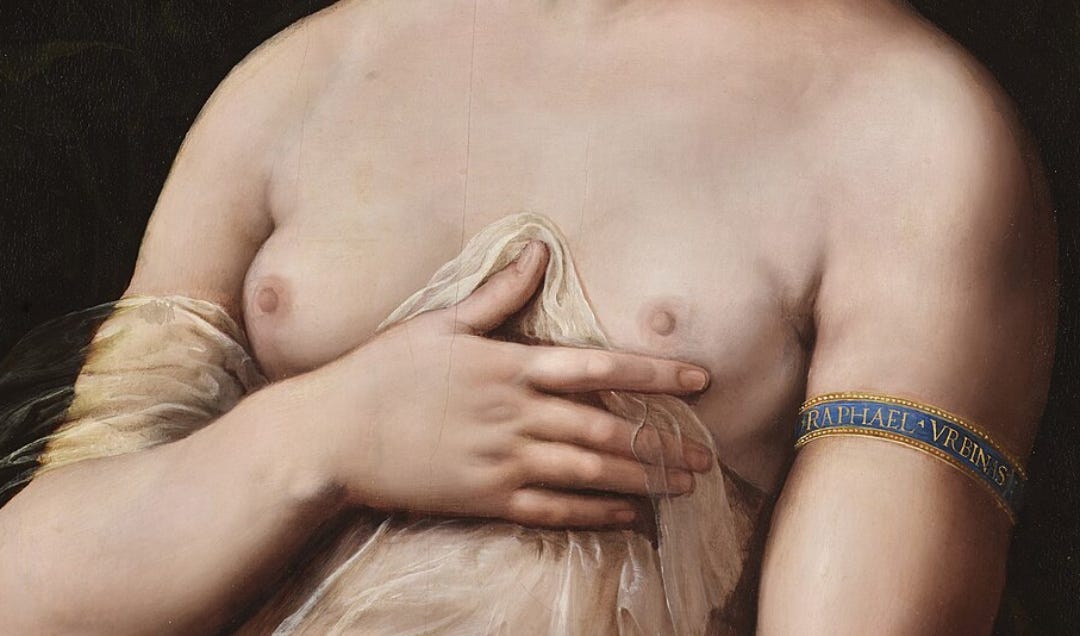
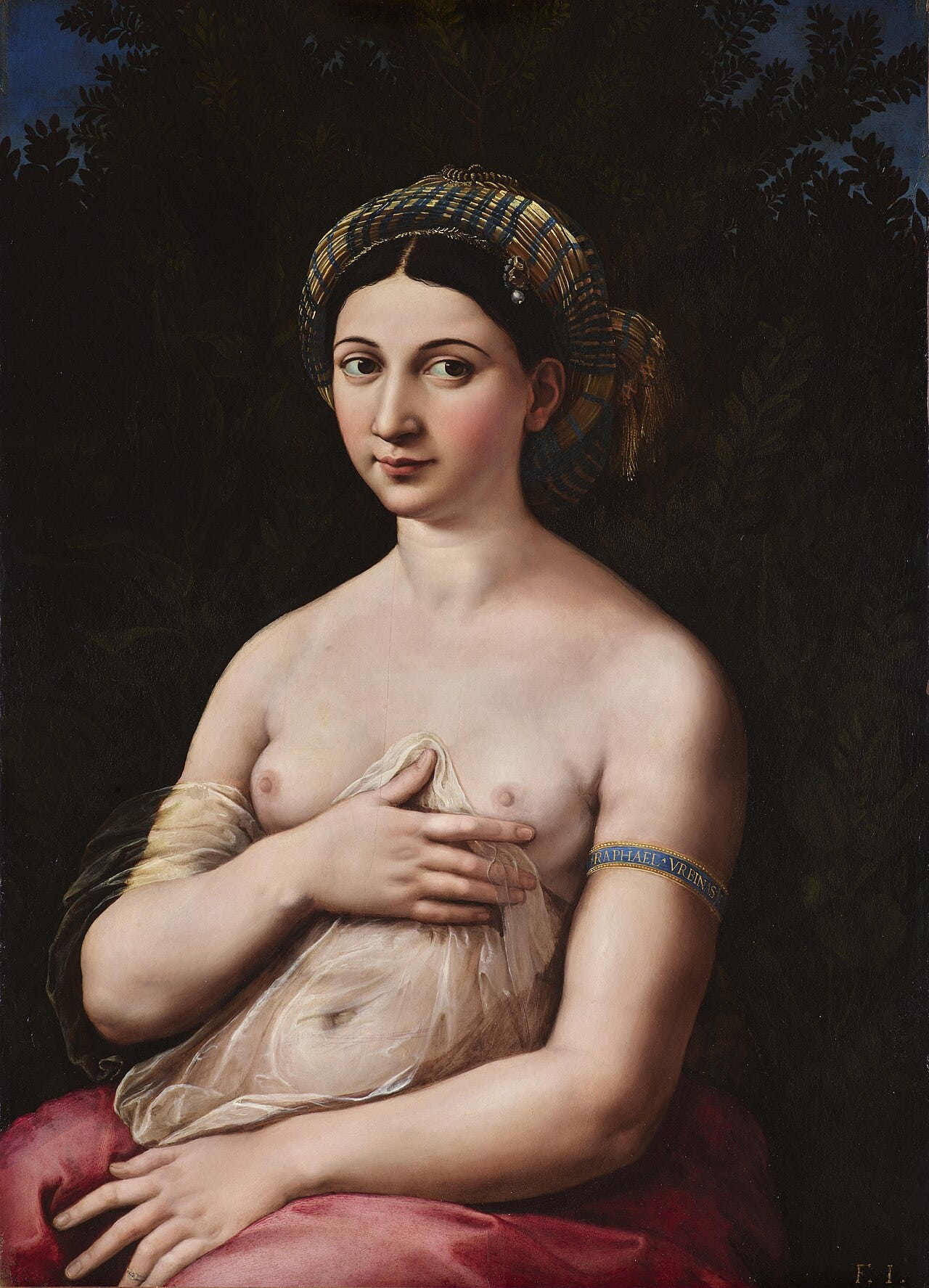
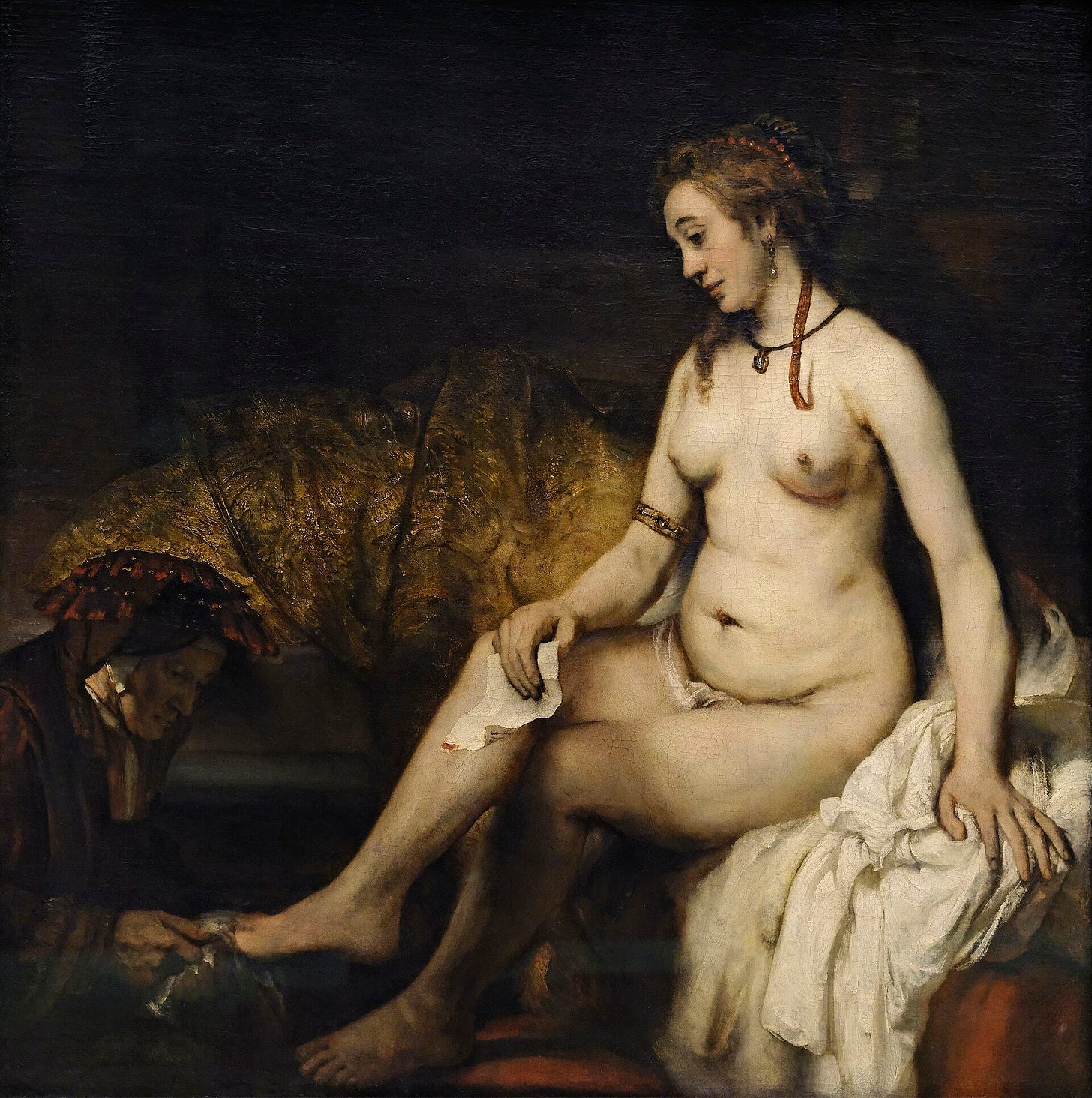
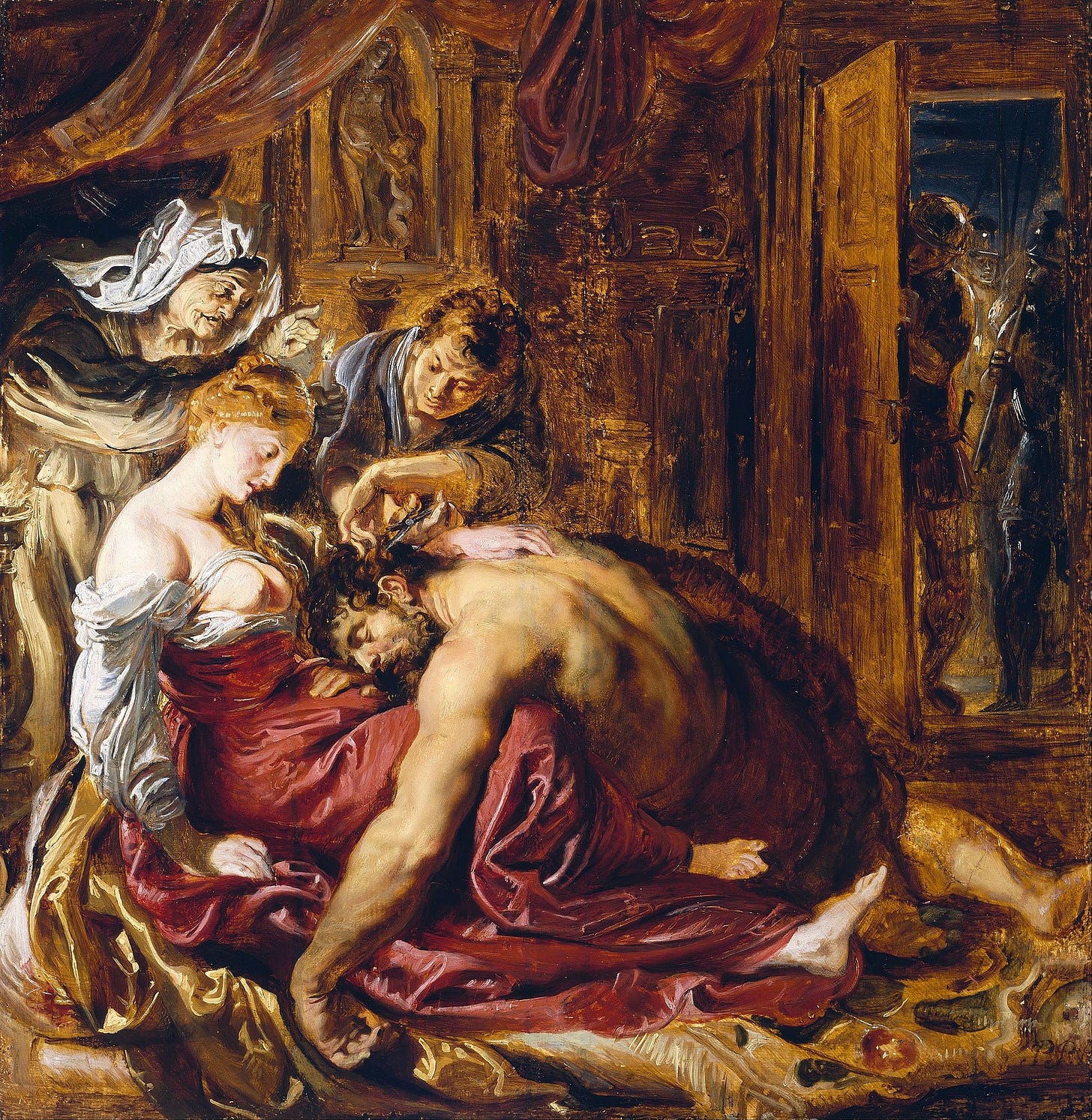
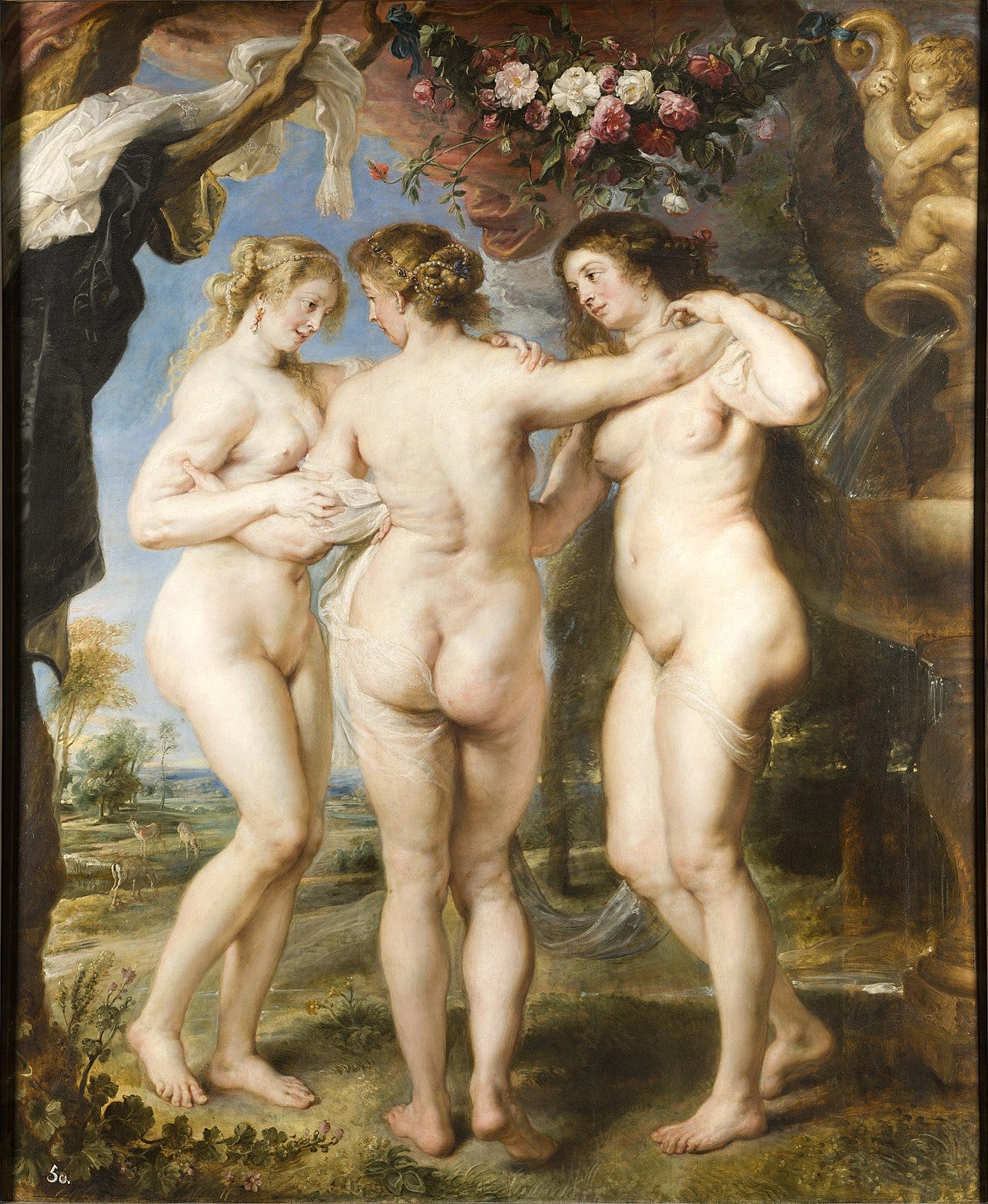
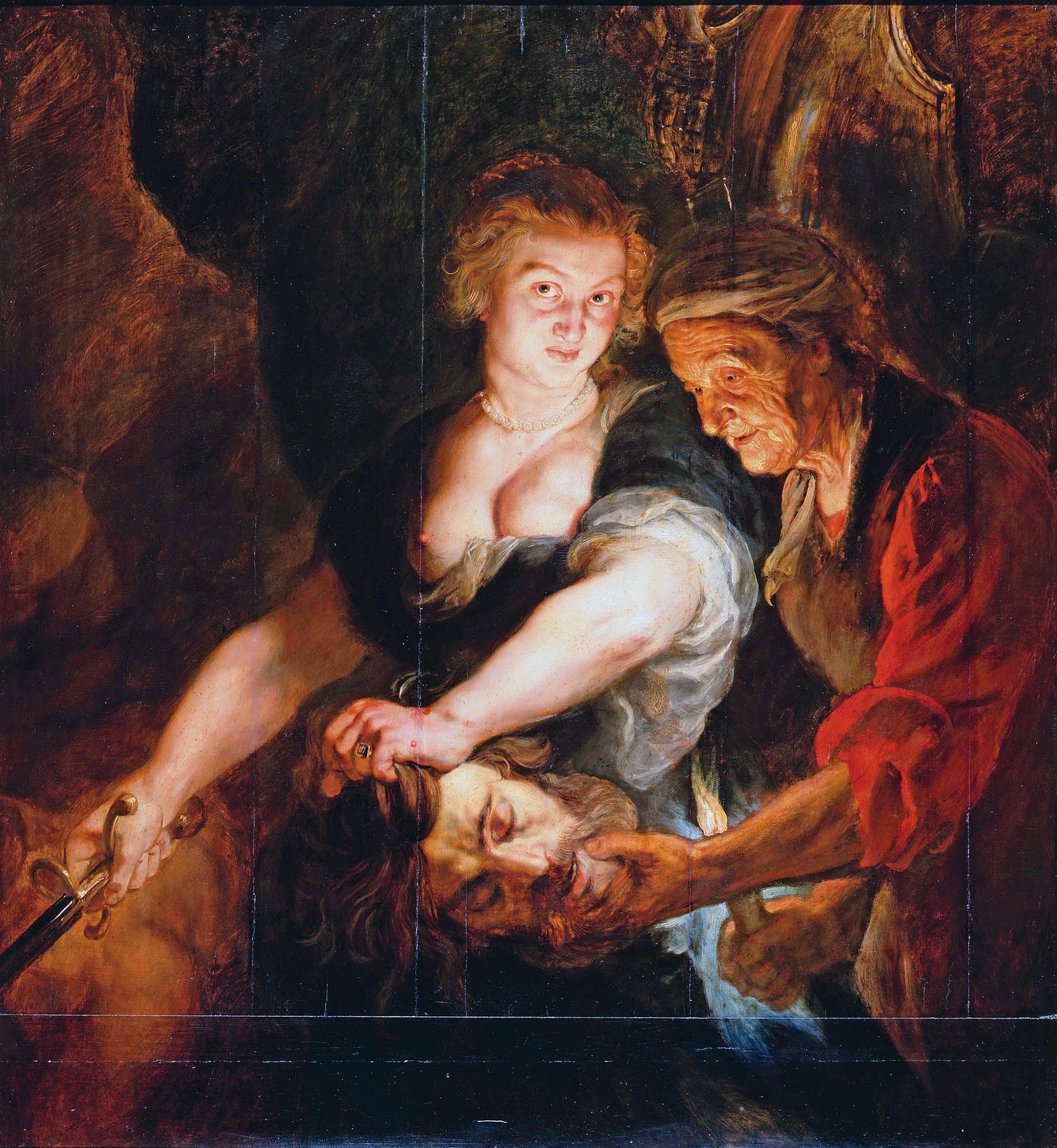
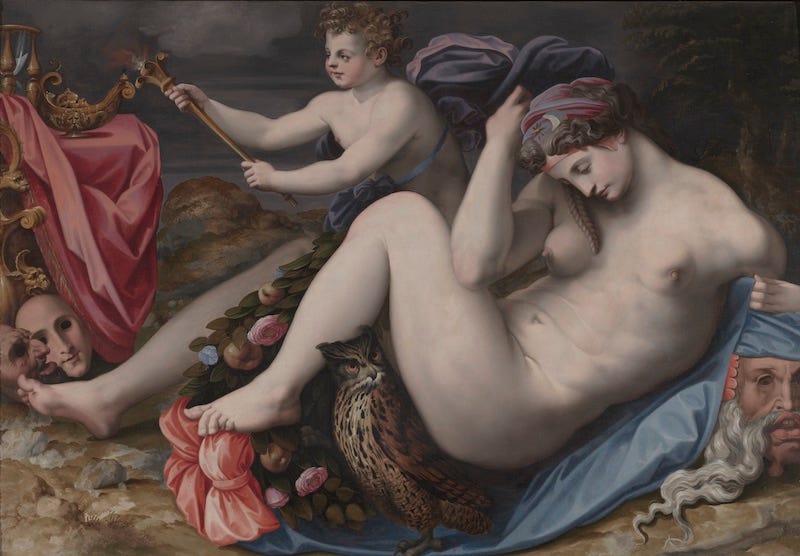
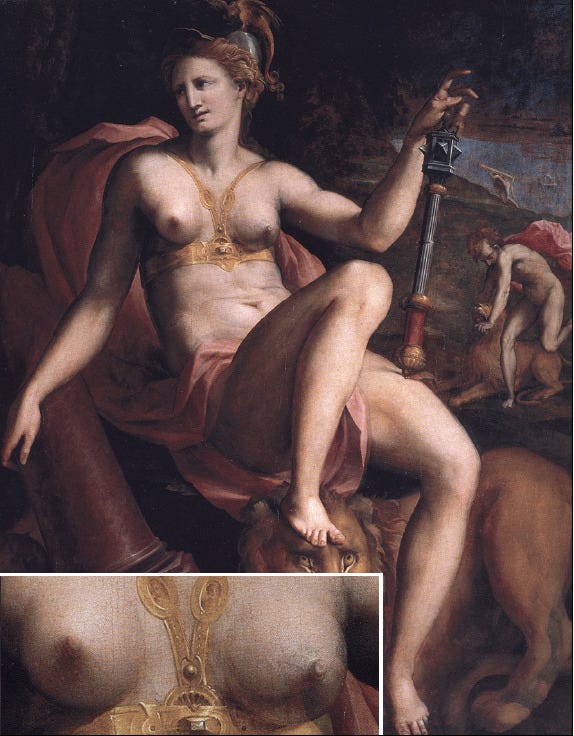
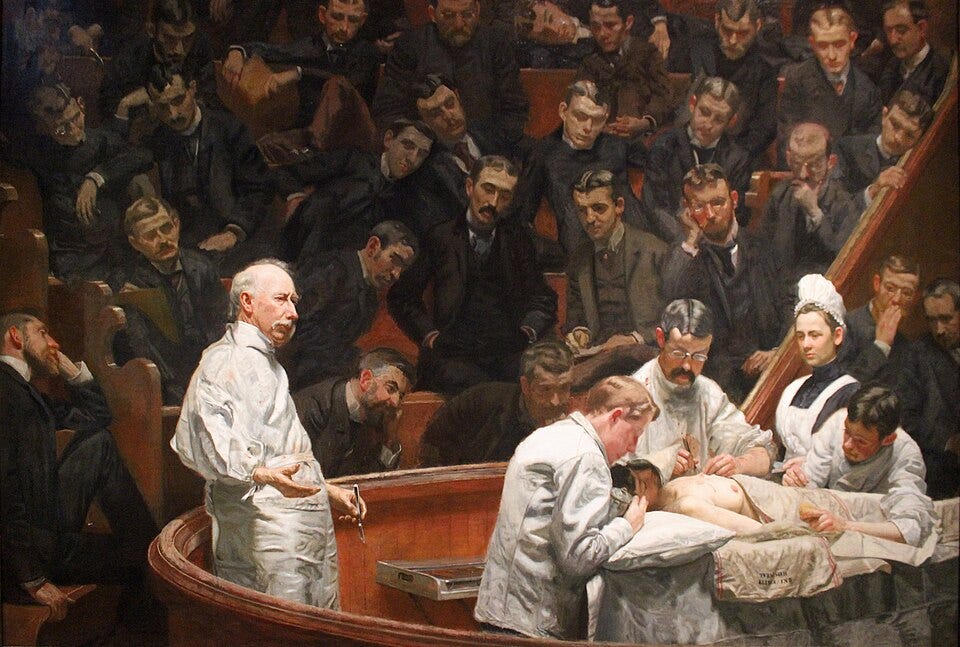
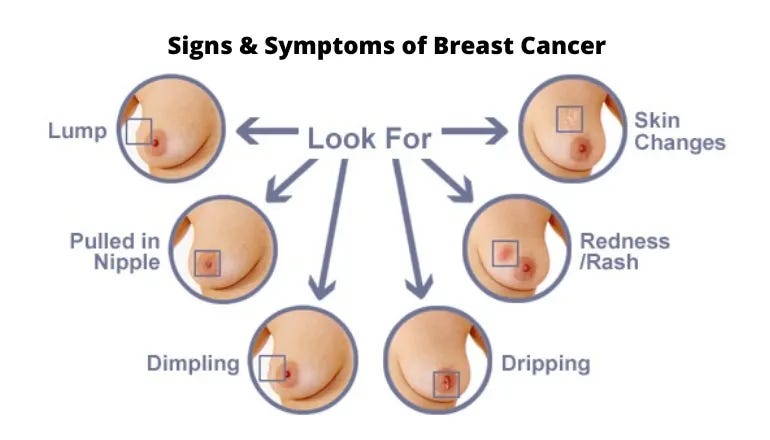
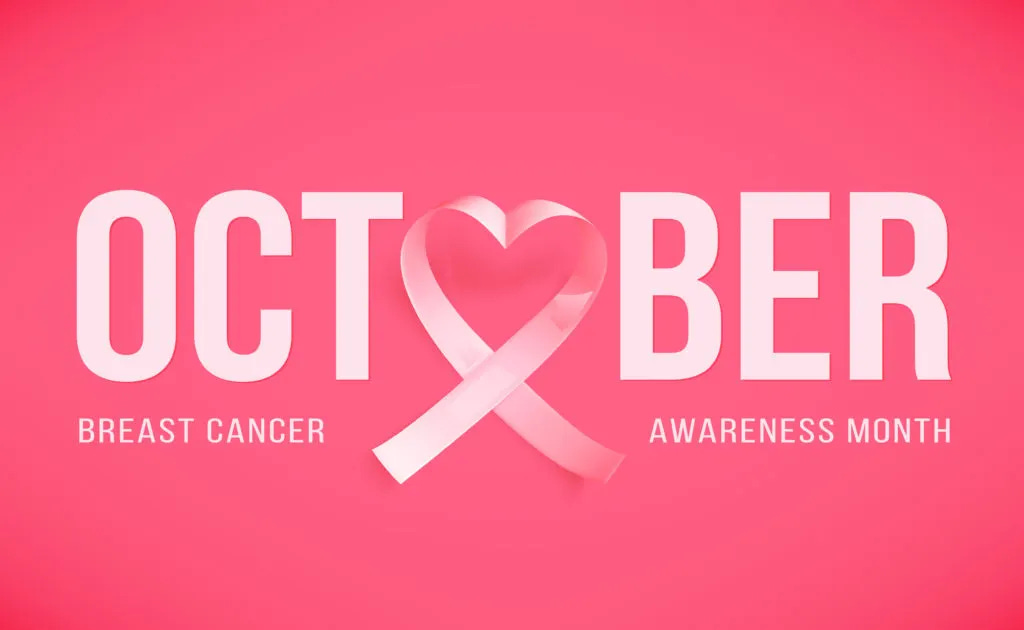
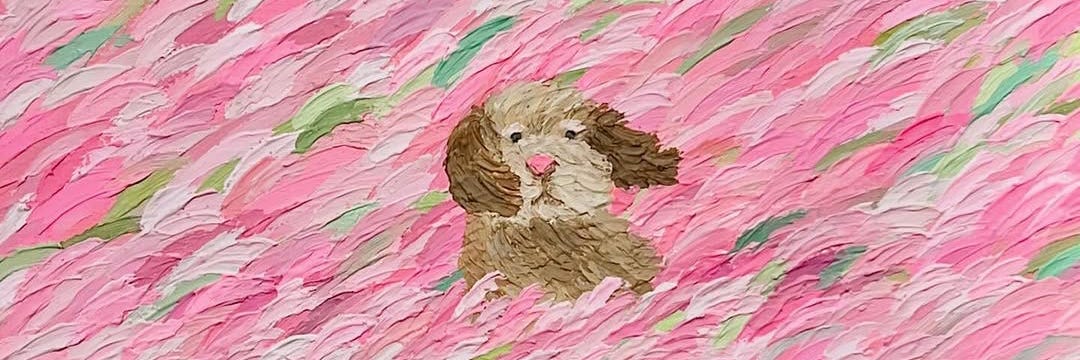



This is absolutely fascinating and well written out. 💕
I love this! I wrote a piece about cancer in the Louvre. Astounds me that more museums do not include “health and disease” as a category in a similar way that they do dogs or Christ or shoes or whatever